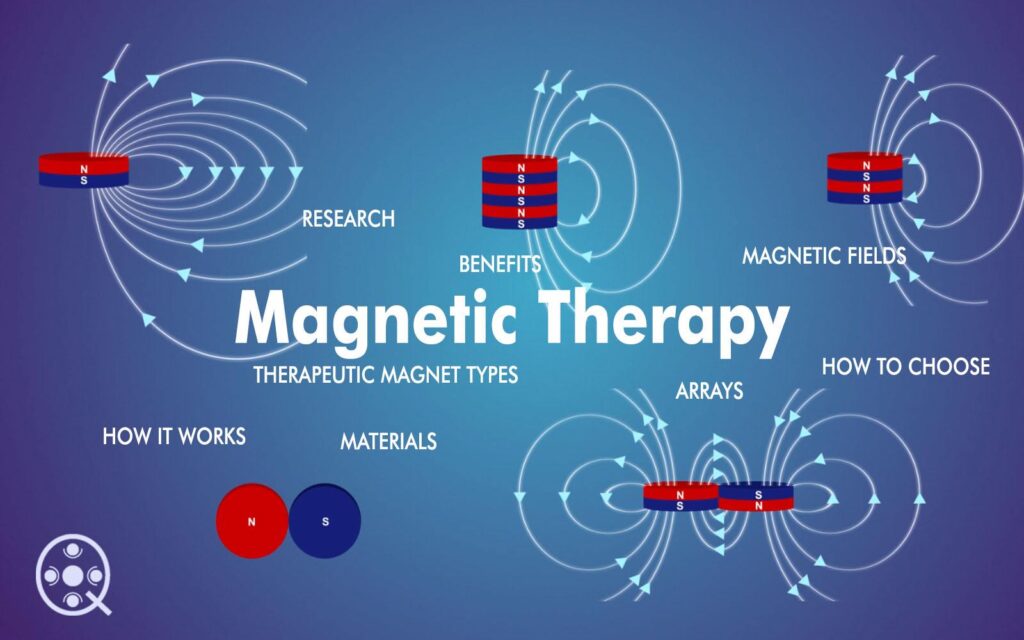How Magnetic Therapy Works
The theory behind magnetic therapy is that magnets improve blood circulation and reduce inflammation. This, in turn, is thought to help relieve pain.
Types of Magnetic Therapy
There are two main types of magnetic therapy:
- Static magnetic therapy: This type of therapy uses static magnets, which are magnets that have a constant magnetic field. Static magnets are typically worn on the body, such as in bracelets or wraps.

- Pulsed electromagnetic field therapy (PEMF): This type of therapy uses magnets that create a pulsed magnetic field. PEMF therapy is typically delivered through a device that is placed over the area of pain.

What are the benefits of magnetic therapy?
Magnetic therapy is used to alleviate pain and has many health benefits. It has been studied as adjunct therapy for treating symptoms of multiple sclerosis (MS), osteo and rheumatoid arthritis, tissue and bone injury, neuropathy, psychiatric disorders, sleep, stress, genital pain, post-polio pain, pain syndromes, and many more conditions. These benefits might naturally occur due to the anti-inflammatory effects that magnetic therapy provides.
Effects purported by users and practitioners of magnetic therapy are increased circulation for old injuries, reduced circulation and less swelling for sprains and strains and other acute injuries, reduced inflammation, correction of energy imbalances, enhanced immune function, more restful sleep, stress relief, and reduced or cessation of pain.



